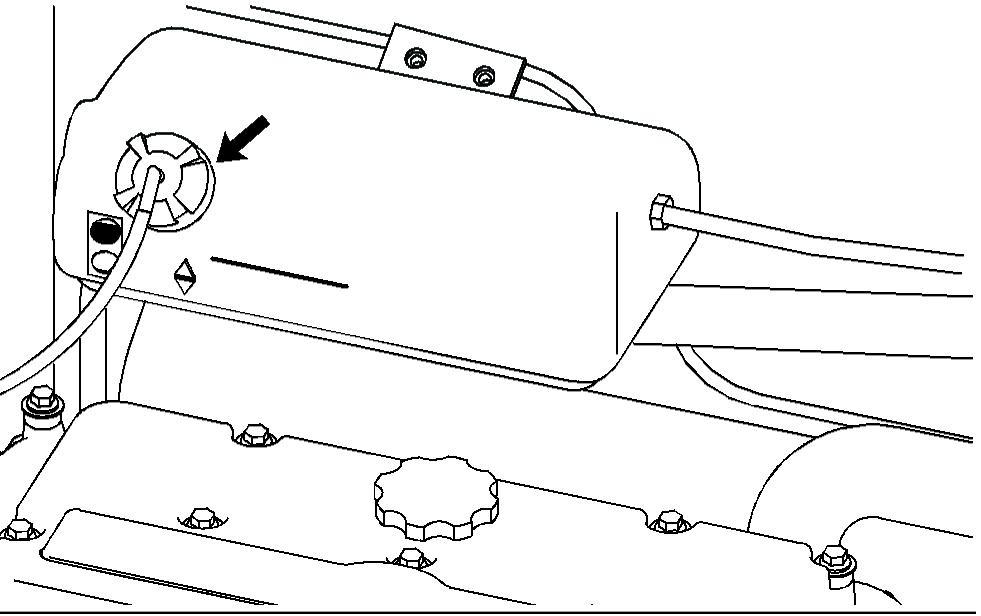
2 minute read
Cooling System Pressure Cap - Clean/Replace120 Cooling System Water Temperature Regulator Replace
Cooling System Pressure Cap - Clean/Replace
Personal injury can result from hot coolant, steam and alkali. At operating temperature, engine coolant is hot and under pressure. The radiator and all lines to heaters or the engine contain hot coolant or steam. Any contact can cause severe burns. Remove filler cap slowly to relieve pressure only when engine is stopped and radiator cap is cool enough to touch with your bare hand. Do not attempt to tighten hose connections when the coolant is hot, the hose can come off causing burns.
Illustration 223 g01081068
The cooling system pressure cap is located on the coolant tank inside the engine compartment. 1. Remove the cap slowly in order to relieve the pressure. 2. Inspect the cap and the gasket for damage, for foreign material, and for deposits. 3. Clean the cap with a clean cloth or replace the cap if it is necessary.
Note: Always check the pressure rating of the old cap before you replace the cap. Replace the old cap with a new cap of the same pressure rating. 4. Reinstall the cap.
Personal injury can result from hot coolant, steam and alkali. At operating temperature, engine coolant is hot and under pressure. The radiator and all lines to heaters or the engine contain hot coolant or steam. Any contact can cause severe burns. Remove filler cap slowly to relieve pressure only when engine is stopped and radiator cap is cool enough to touch with your bare hand. Do not attempt to tighten hose connections when the coolant is hot, the hose can come off causing burns.
NOTICE Care must be taken to ensure that fluids are contained during performance of inspection, maintenance, testing, adjusting and repair of the product. Be prepared to collect the fluid with suitable containers before opening any compartment or disassembling any component containing fluids. Refer to Special Publication, NENG2500, "Caterpillar Dealer Service Tool Catalog" for tools and supplies suitable to collect and contain fluids on Caterpillar products. Dispose of all fluids according to local regulations and mandates.
NOTICE Failure to replace the engine's water temperature regulator on a regularly scheduled basis could cause severe engine damage.
NOTICE Since Caterpillar engines incorporate a shunt design cooling system, it is mandatory to always operate the engine with a water temperature regulator. Depending on load, failure to operate with a water temperature regulator could result in either an overheating or an overcooling condition.
Replace the water temperature regulator on a regular basis in order to reduce the chance of unscheduled downtime and of problems with the cooling system. The water temperature regulator should also be replaced after the cooling system has been cleaned. Replace the water temperature regulator while the cooling system is completely drained or while the








